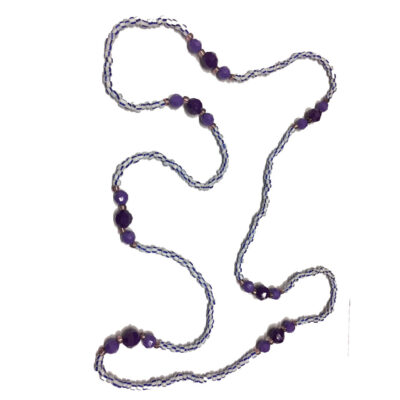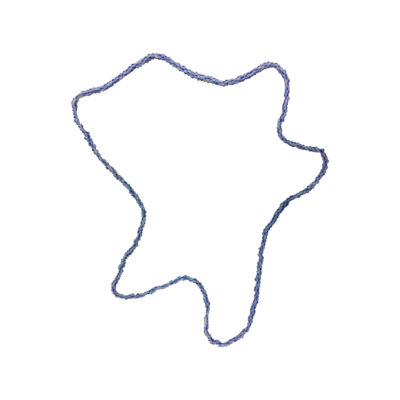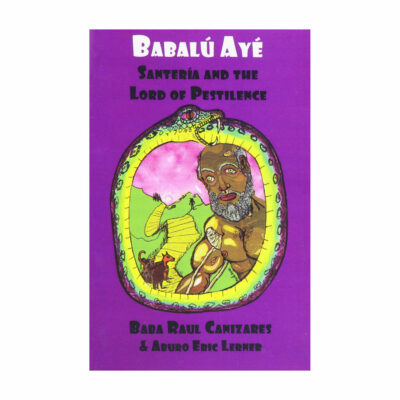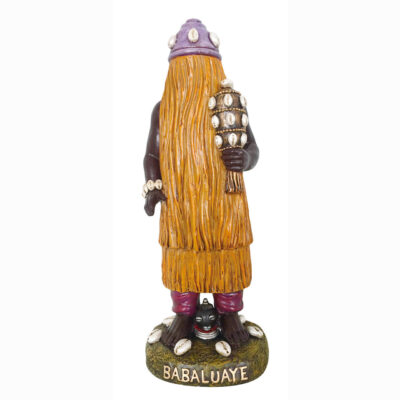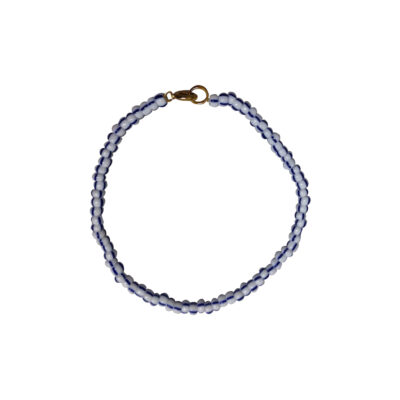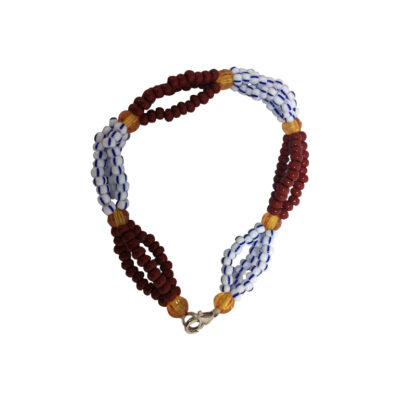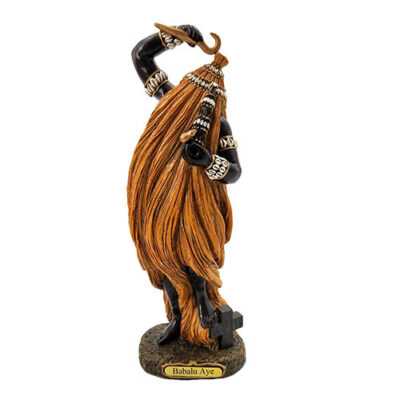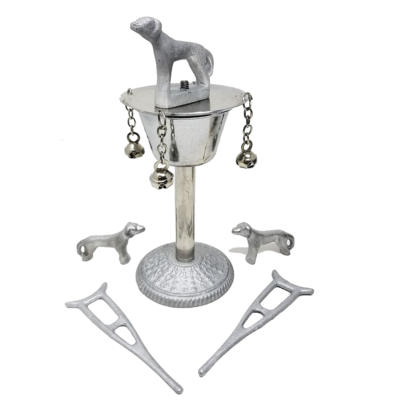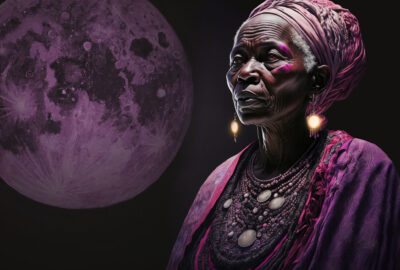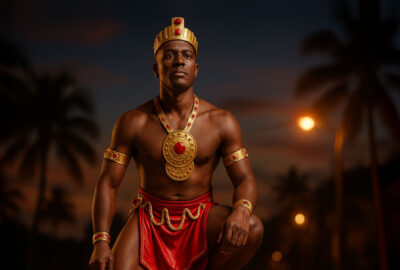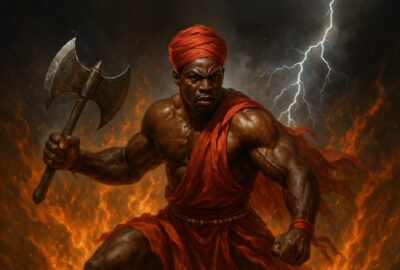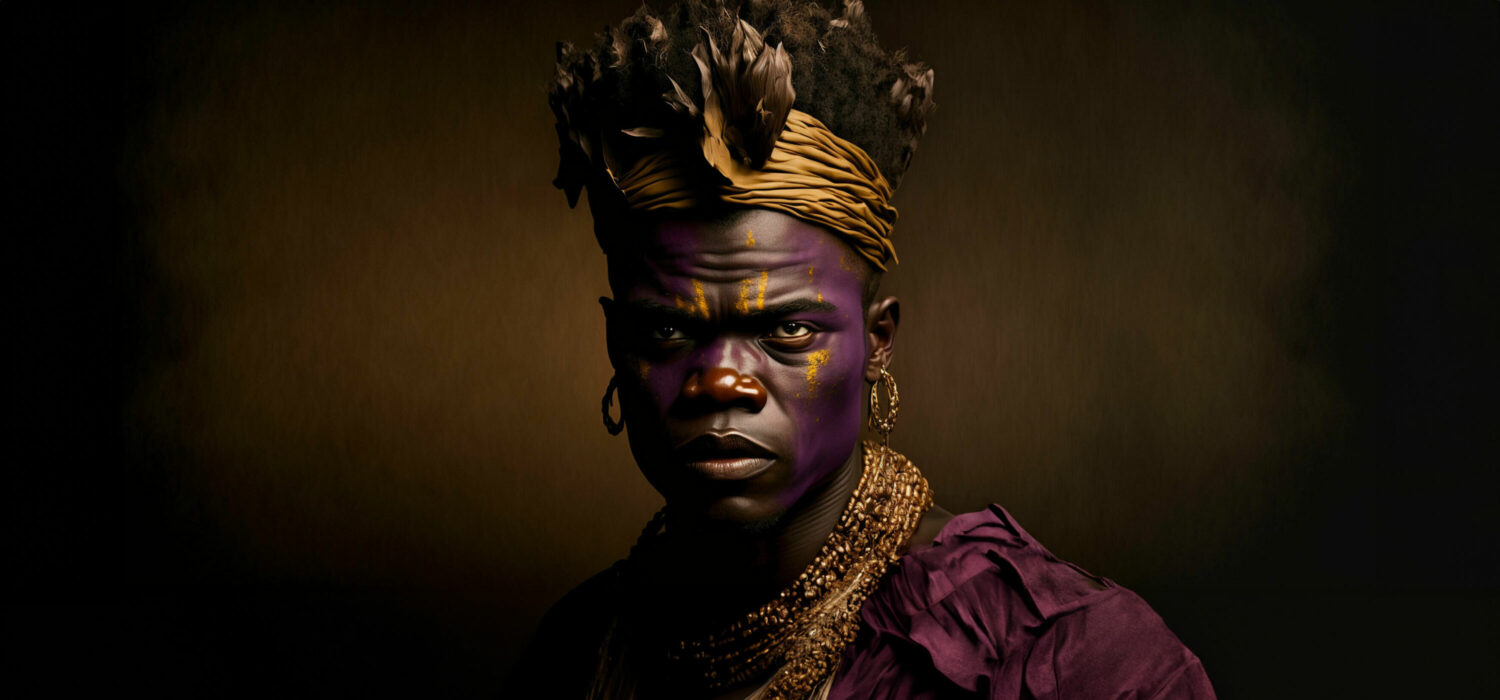
Babalú-Ayé: The Orisha Who Can Cure The Sick
Babalú-Ayé holds a place of both honor and awe in Santería, a religion rich with the lore of the Yoruba people. His beginnings trace back to West Benin, where his worship started with a single tribe. His renown then spread widely to multiple tribes across Africa’s western coast, signifying his vast influence.
Babalú-Ayé is known by several other names, including Ọbaluaye or Sopona, as revered in the Yoruba religion. In syncretism with Catholicism, especially within Cuban tradition, he is also recognized as San Lazaro or Saint Lazarus. His name, Babalú-Ayé, translates to "Father, Lord of the Earth," indicating his significant authority over health and earthly matters
As an Orisha, Babalú-Ayé is the force that weaves the delicate balance between sickness and health, life and death. He offers healing to those in distress and is a source of comfort for the sick. On the other side, he's believed to have the power to cause disease, a stark reminder to those who stray from righteousness.
Despite advancements in medicine, his role within spiritual circles still remains relevant. New illnesses continue to arise, challenging human efforts to control them, reminding us of Babalú-Ayé's enduring dominion over health and illness.
Basically, Babalú-Ayé represents two important aspects of life: getting sick and striving to stay healthy. It is because he controls some of the deepest parts of life that we cannot see that many choose to honor and worship this merciful Orisha.
The Image of Babalú-Ayé
Babalú-Ayé's image is rich in symbolism across different cultures. In African traditions, he is shown as a strong man carrying a crutch and wrapped in braided raffia (mariwó) curtains made from strips of palm leaves. This attire covers his body to conceal the marks of smallpox, illustrating his close connection to this disease and his role as a healer.
In American traditions, depictions of Babalú-Ayé often show him with signs of leprosy or smallpox, highlighting his dominion over these afflictions. His crutches signify the support he offers to those suffering from illnesses, and the dogs at his side represent his constant companions who aid in his healing duties.
Within Cuban Santeria, he shares similarities with Saint Lazarus, who is also known for his afflictions and healing powers. Saint Lazarus is also portrayed as a beggar with leprosy, and accompanied by two dogs. This syncretism between Babalú-Ayé and Saint Lazarus integrates religious beliefs and practices, illustrating how Babalú-Ayé's image and significance have adapted within different contexts while maintaining his core attributes as a powerful healer and protector against disease.
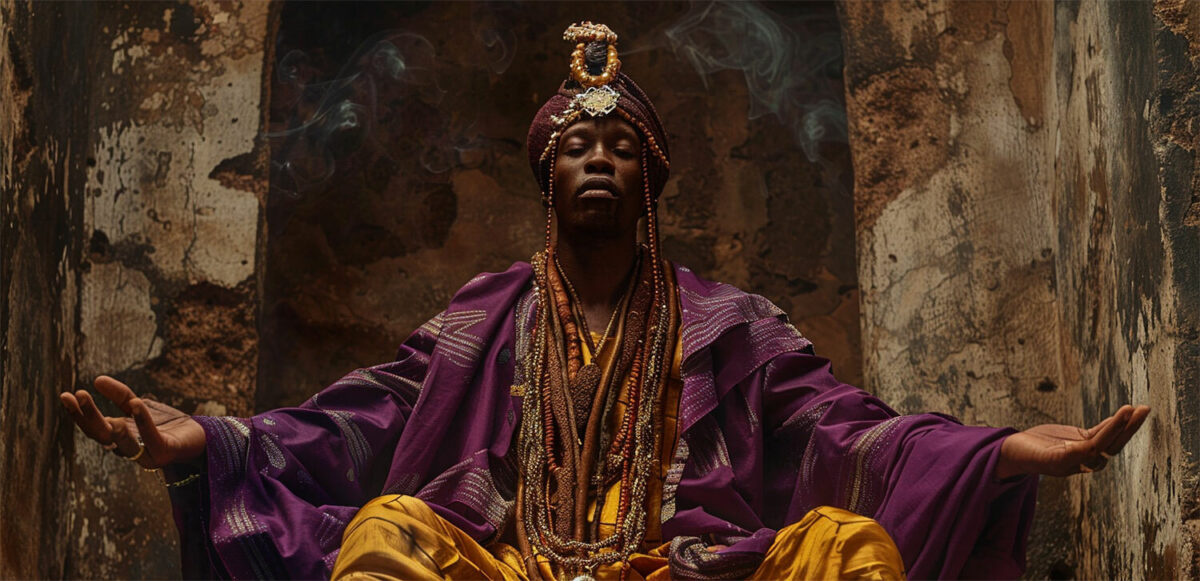
Worship of Babalú-Ayé involves turning to him for healing and comfort in sickness, acknowledging his power over health and illness.
The Worship of Babalú-Ayé
Worship of Babalú-Ayé in Santería involves turning to him for healing and comfort in sickness, acknowledging his power over health and illness. Practitioners respect him for his dual ability to inflict and cure diseases, considering him a source of mercy. This reverence is deep-rooted in stories like the one where Babalú-Ayé was the only one to aid the Orisha Shango during his illness.
Babalú-Ayé's garments are usually purple, and burlap, and his traditional colors are earth tones, yellow, and royal purple -- the colors of a bruise. His beaded necklace, or eleke, pattern varies, but usually contains cowrie shells, jet beads, and white beads with thin blue stripes.
Devotees offer Babalú-Ayé foods such as roasted corn, beans, or other grains, and beverages like rum, tobacco, or white wine during prayers and rituals. Do not ever offer him peanuts or sesame seeds as they are taboo and will offend him. Associated animals include scavengers like vultures and buzzards, which clean the earth, similar to how Babalú-Ayé cleanses sickness. His linked gemstones, like bloodstone, tanzanite, snowflake obsidian, and jasper, signify healing and protection.
The Feast Day of Babalú-Ayé
Babalú-Ayé’s feast day is celebrated on December 17th. This day is marked by public honors and pilgrimages, particularly notable in places like Cuba where it's syncretized with the Catholic tradition of Saint Lazarus. On this day, many followers participate in processions and rituals, expressing their devotion and seeking blessings for health.
In the Yoruba religion, this occasion is a time for special reverence, and it is common for the festivities to include dancing and other forms of celebration that honor the Orisha of healing.
In Cuba, the town of Rincón is known to overflow with pilgrims awaiting the feast day, highlighting the blend of African and Catholic traditions during the celebration.
The Children of Babalú-Ayé
Those who are considered the “Children of Babalú-Ayé” in Santería and other spiritual traditions tend to have a natural inclination towards healing, be it through modern medicine or traditional spiritual practices. Often, they are individuals who have personally encountered and overcome health challenges, such as skin conditions, early in life.
This personal experience with illness often ignites a passion for healing others, driving them to careers where they can serve, like doctors, nurses, therapists, or spiritual healers.
These individuals are typically known for their joyful disposition, though it's not uncommon for them to be quick-tempered, perhaps reflecting the dual nature of Babalú-Ayé himself, who is associated with both disease and cure. Their quick ability to learn and apply healing techniques can see them excel in various roles across the medical field, from performing surgeries to engaging in critical medical research, and even serving as counselors or shamans who work with the healing energies of the natural world.
Creating a Babalú-Ayé Altar
Creating an altar for Babalú-Ayé, a revered figure in the Santería religion, involves both respect and intention. The altar starts with a terracotta pot, or sopera, which is often embellished with cowrie shells, symbols of wealth, and communication with the divine. This pot, central to Babalú-Ayé's shrine, should be placed in an undisturbed, serene area, reflecting the sanctity of the space.
In addition to the pot, eighteen loose cowrie shells are arranged for "Diloggun" divination—a sacred practice of seeking guidance from the Orisha. The altar is also set with specific stones that resonate with Babalú-Ayé's energy, such as bloodstone or jasper. Offerings of food that are favored by him—such as roasted corn or other grains—are also essential, serving as sustenance for his spirit.
The presence of his tools, symbols, or a statue, which can be a figurine representing the deity, adds a visual and spiritual focus to the altar. Surrounding this are candles in white, yellow, or purple—colors that symbolize purity, healing, and connection to the divine.
A statue or image of Babalú-Ayé enhances the personal connection to the deity and serves as a focal point for prayers seeking his mercy and compassion. The altar becomes a sacred space for rituals, whether for healing, protection from sickness, or thanksgiving.
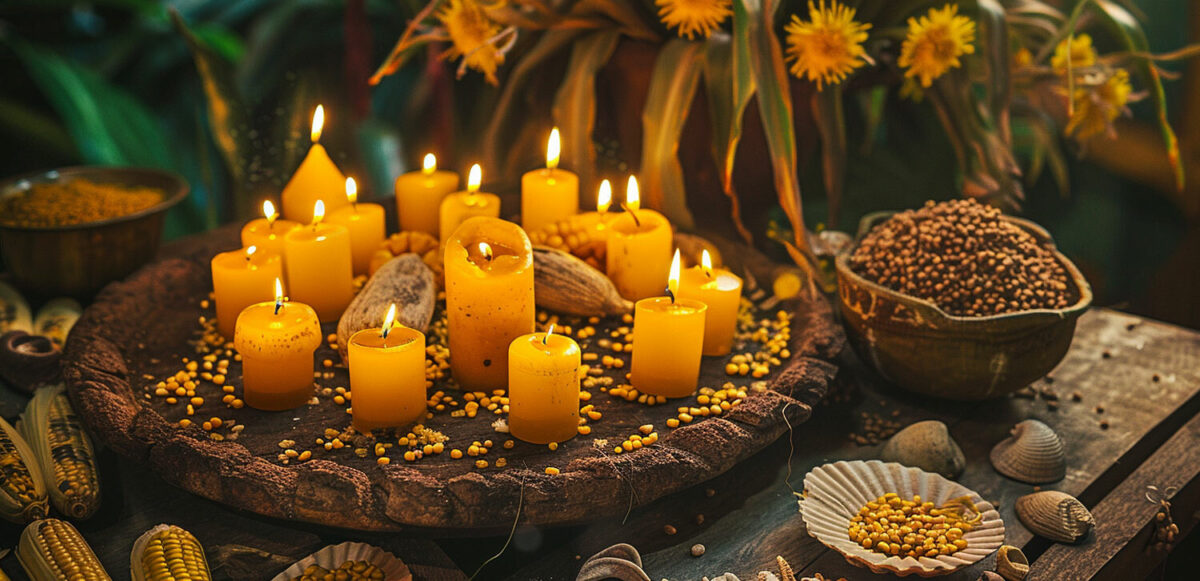
Creating an altar for Babalú-Ayé, a revered figure in the Santería religion, involves both respect and intention.
Babalú-Ayé Rituals For Healing and Health
Babalú-Ayé is often sought after for his profound connection to healing and health. This section explores three unique rituals that call upon Babalú-Ayé’s powers to foster wellness and ward off disease. Each ritual, deeply rooted in tradition, uses specific offerings and prayers to engage with the Orisha’s benevolent force. These practices reflect the rich cultural heritage of the Yoruba people while offering participants a spiritual method to seek physical and emotional healing.
Ritual for Healing the Sick
This ritual calls upon Babalú-Ayé, the Orisha of healing and diseases, to alleviate illness and restore health. It is potent for those suffering from chronic ailments and is designed to cleanse both body and spirit. Gather the following ritual ingredients before you begin:
- Tools for Babalú-Ayé
- Healing Oil
- White candles
- A photograph or personal item of the sick person
Arrange an altar with the photograph or personal item of the sick person and white candles for purity to create a sacred space. Place the Tools for Babalú-Ayé in the center to symbolize the presence of the Orisha. Anoint the white candles with the Healing Oil, focusing on the areas of pain or discomfort that the sick person is dealing with. Light the candle, and recite prayers to Babalú-Ayé, asking for his intervention and mercy to heal the sick. Conclude by meditating in the candlelight, visualizing the recovery and strengthening of the ill person.
Ritual for Protection from Diseases
This protective ritual invokes Babalú-Ayé’s ability to ward off diseases, creating a barrier against health threats. It is ideal for those who feel vulnerable to illness or are in environments with high disease exposure. Here is what you will need to perform this ritual:
- Orisha Babalú-Ayé Statue
- Sandalwood, Lavender, or another healing incense
- Tools for Babalú-Ayé
Begin by placing the Orisha Babalú-Ayé Statue on an altar surrounded by his tools. Light some incense known for its healing properties such as sandalwood or lavender cleanse the area from negative energies and pathogens. Recite the following prayer to Babalú-Ayé, seeking his shield against diseases…
God of the epidemics and the sick.
I pray to you now, have pity on us your children.
Oh, glorious father, keep sickness away from my home and protect your children from epidemics.
Thank you, my father.
Maintain the incense burning to keep the protective aura strong.
Ritual for Good Health
This ritual promotes ongoing good health and vitality, appealing to Babalú-Ayé’s benevolent aspects to nurture and maintain the body’s strength.
- Clay sopera
- Green candles for health and growth
- Fresh herbs (basil, mint)
Set up the clay sopera on your altar as a vessel of health and renewal. Surround it with green candles to attract positive health energy. Fill the sopera with fresh herbs like basil and mint, known for their healing properties. When adding these items to the sopera, do so with intention and respect for Babalú-Ayé's power. Each ingredient carries specific energies that, when combined, can amplify the ritual's effectiveness. Light the candles and offer prayers to Babalú-Ayé for enduring health and vitality. Perform this ritual monthly to affirm your commitment to good health continuously.
Within many spiritual traditions, practitioners honor Babalú-Ayé for his healing prowess and protective influence against illness. Through ritualistic prayers and offerings, they reinforce their belief in his power to heal and maintain health. Such practices symbolize a deeper spiritual communion, transcending mere physical healing to encompass a holistic embrace of life's ebb and flow. This reverence for Babalú-Ayé underscores a journey toward resilience and a deeper appreciation of life’s complexities.
